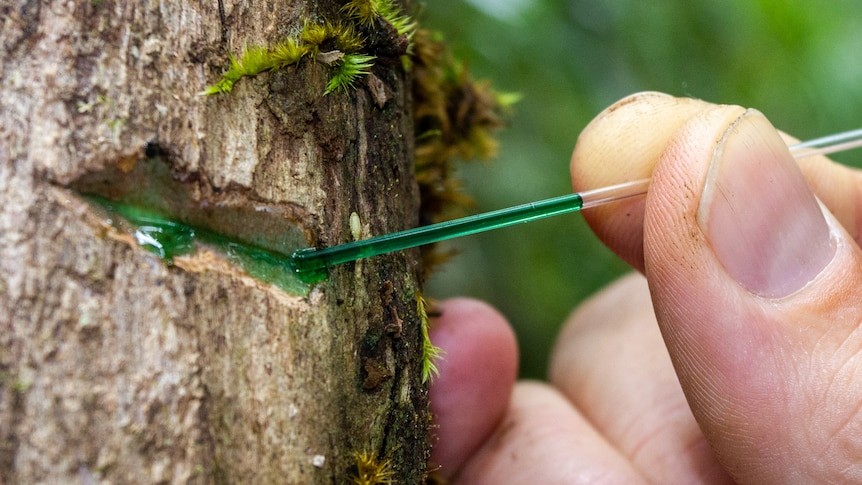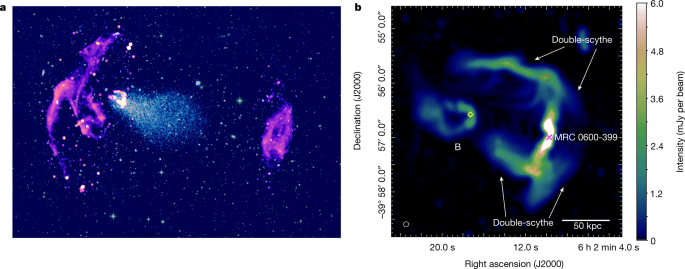Fingers crossed for successfully staying off the Desvenlafaxine.Thanks for your reply, I apologise that I somehow missed it.
For the record, I have been on and off cocktails of psychiatric drugs for 16 years. Pretty well all the common anti depressants, anti psychotics, and mood stabilisers (Valproic Acid and Lithium) I have experience with, all under the supervision of psychiatrists (not GPs).
Pristiq is the first drug to cause me any such grief. Coming off the others would give me a period of insomnia, at the worst. Pristiq (and I continue to take IR Seroquel) is the only drug to have serious withdrawals for me. Today's my first day taking no Pristiq at all (I have weaned down from 300mg to 0mg per my psychiatrist advice).
I can't really explain the feeling in words, but every night I feel like my skin is on fire and I'm lucky if I get even 4 hours sleep, which consist of vivid nightmares.
I have been told (unverified) that Pristiq and Effexor may hit opiate receptors in addition to their role as SNRIs, which could explain why they have some benefits for those with chronic pain disorders, and also perhaps why they give the heroin-tier withdrawals that I continue to experience.
Navigation
Install the app
How to install the app on iOS
Follow along with the video below to see how to install our site as a web app on your home screen.
Note: This feature may not be available in some browsers.
More options
-


LIVE: St Kilda v Western Bulldogs - 7:30PM Thu
Squiggle tips Saints at 51% chance -- What's your tip? -- Team line-ups »
You are using an out of date browser. It may not display this or other websites correctly.
You should upgrade or use an alternative browser.
You should upgrade or use an alternative browser.
Random Science news and articles
- Thread starter Strapping Young Lad
- Start date
- Tagged users None
Werewolf
Underminer
An interesting description of how our knowledge is safely stored in a vault in Svalbard archipelago in the event of global catastrophe:

 www.abc.net.au
www.abc.net.au
In 1859 the sun fried the entire world's electronics. Next time, we'll be prepared
In a remote archipelago near the North Pole, there is a town where polar bears outnumber humans — and we've just started burying crucial reels of film there.
Didn't know where to put this one - this study has found some of the epigenetic changes that allow squid to feed in the sunny, low pressure upper oceans then dive deep into the great depths without becoming crushed calamari. https://www.gizmodo.com.au/2020/08/how-jumbo-squids-survive-freezing-cold-oxygen-deprived-waters/
Snake_Baker
The one true King of the North
- Apr 24, 2013
- 81,024
- 153,169
- AFL Club
- North Melbourne
- Other Teams
- Essendon Lawn Bowls Club
Snake_Baker
The one true King of the North
- Apr 24, 2013
- 81,024
- 153,169
- AFL Club
- North Melbourne
- Other Teams
- Essendon Lawn Bowls Club
- Banned
- #180
Didn't know where to put this one - this study has found some of the epigenetic changes that allow squid to feed in the sunny, low pressure upper oceans then dive deep into the great depths without becoming crushed calamari. https://www.gizmodo.com.au/2020/08/how-jumbo-squids-survive-freezing-cold-oxygen-deprived-waters/
I assume this is selective methylation.
I wonder what induces it?
Fascinating.
Mofra
Moderator
- Dec 6, 2005
- 67,044
- 198,189
- AFL Club
- Western Bulldogs
- Other Teams
- Footscray, Coney Island Warriors
- Moderator
- #181
This is really interesting:

 www.scientificamerican.com
www.scientificamerican.com

Life on Venus? Breakthrough Initiatives Funds Study of Possible Biosignature
A team of scientists will examine the astrobiological prospects for phosphine on Earth’s hellish twin
Clouds of Venus could be a good life candidate environment - certain depths of the atmosphere are similar pressure and temperature to earth, lots of energy for chemical/biochemical systems and a rich soup of molecules.This is really interesting:

Life on Venus? Breakthrough Initiatives Funds Study of Possible Biosignature
A team of scientists will examine the astrobiological prospects for phosphine on Earth’s hellish twinwww.scientificamerican.com
The surface would be tougher - an extremophile more extreme that those on Earth would be needed.
I keep thinking of how Phosphine gas is created industrially - heat up phosphorus. The surface of Venus is like a smelter, so a chemical process as opposed to a biochemical process must be possible.
Last edited:
Snake_Baker
The one true King of the North
- Apr 24, 2013
- 81,024
- 153,169
- AFL Club
- North Melbourne
- Other Teams
- Essendon Lawn Bowls Club
- Banned
- #183
One minute you're sitting in your car, the next minute you're sitting on the road.
Another not-quite-sure-where-should put-it https://thenewdaily.com.au/news/202...-say-bacteria-behind-deaths-of-330-elephants/
Months ago 330 elephants died suddenly in Botswana, I followed it at the time, there were a couple of smaller groups die. Many of the elephants appeared to have literally dropped while on the hoof. The authorities quickly eliminated common infectious disease and poisons, leaving it a mystery.
Months later they now believe it is a neurotoxin from water dwelling cyanobacteria. Unless you really want to get down and dirty about them the Wiki has a good article about the very toxic world of Cyanotoxins. https://en.wikipedia.org/wiki/Cyano...,Parkinson's disease, and Alzheimer's disease.
Months ago 330 elephants died suddenly in Botswana, I followed it at the time, there were a couple of smaller groups die. Many of the elephants appeared to have literally dropped while on the hoof. The authorities quickly eliminated common infectious disease and poisons, leaving it a mystery.
Months later they now believe it is a neurotoxin from water dwelling cyanobacteria. Unless you really want to get down and dirty about them the Wiki has a good article about the very toxic world of Cyanotoxins. https://en.wikipedia.org/wiki/Cyano...,Parkinson's disease, and Alzheimer's disease.
Methylation is identified as the main 'epigenetic' change between domestic chickens and the red jungle fowl https://phys.org/news/2020-09-epigenetics-linked-genetic-differences-domesticated.htmlI assume this is selective methylation.
I wonder what induces it?
Fascinating.
Raven intelligence similar to great apes Young Ravens Rival Adult Chimps in a Big Test of General Intelligence - Scientific American
An aside. I noticed the crows around Richmond had to change their behaviour during Covid19, hanging around back yards and domestic bins more, usually they hang around the back lanes raiding the bins of restaurants etc. Since the restrictions have lifted I have not seen a crow hanging around my house, so back to business as usual. It's been much quieter in the morning.
An aside. I noticed the crows around Richmond had to change their behaviour during Covid19, hanging around back yards and domestic bins more, usually they hang around the back lanes raiding the bins of restaurants etc. Since the restrictions have lifted I have not seen a crow hanging around my house, so back to business as usual. It's been much quieter in the morning.
Last edited:
This is a 'ain't nature incredible' and why did I not know this (this will make more sense if I tell you in a past life and many years ago I started to do a PhD in Cubozoan (box jelly) envenomation but never finished)
The ABC had an article about a bloke who got a Blue Ringed Octopus bite from a very small juvenile -see A blue-ringed octopus bite is rare but potentially deadly. Here's what you need to know - ABC News which got me interested in the toxin, Tetrodotoxin (TTX), which blocks fast Na+ channels in the peripheral nervous system, is the main component of the venom. Additional components of the venom include histamine, tryptamine, octopamine, taurine, acetylcholine and dopamine, but it's the TTX that will take you to the other side. The article gives you some idea of the horror of being progressively paralysed while awake.
Don't play with them if you see one over the summer, there is no antidote however respiratory support will keep you alive until the effects fade. So if you are unlucky enough to get bitten, call an ambulance, apply a pressure bandage if it's a limb bite, keep calm, still as you can and get to hospital.
Tetrodotoxin (TTX) poisoning most commonly occurs with the pufferfish, but occurs in many species, in fact what is weird is that it scattered occurs across many phylum. Fish, molluscs, starfish, worms, flatworms, crabs and even the odd newt. What was also strange was it only popped up here and there amongst the different phyla seemingly almost at random. A mystery.
In 2011 the mystery was solved.
Certain species of bacteria (eg pseudomonas, aeromonas, vibrio and others)were found to produce Tetrodotoxin and that these bacteria had become endocellular (Inside the cell) and symbiotic in these other organisms. Most organism that have been examined, except newts, these bacteria have been found to be the source of the TTX. For the Blue Ringed Octopus TTX production has been identified by 6 different bacteria, Alteromonas (2 strains), Bacillus (2), Pseudomonas (1) and Vibrio (1), based on biochemical and biological characteristics.
Isn't nature amazing! Darwin described nature as 'red in tooth and claw' however cooperation and mutual benefit often win the day. Mitochondria are perhaps the most powerful example.
If you are the sort of person whose heart gets thumping with TTX, the Wiki has a pretty detailed entry, including some interesting historical tid bits Tetrodotoxin - Wikipedia . About the octopus Tetrodotoxin-producing bacteria from the blue-ringed octopus Octopus maculosus | SpringerLink
The ABC had an article about a bloke who got a Blue Ringed Octopus bite from a very small juvenile -see A blue-ringed octopus bite is rare but potentially deadly. Here's what you need to know - ABC News which got me interested in the toxin, Tetrodotoxin (TTX), which blocks fast Na+ channels in the peripheral nervous system, is the main component of the venom. Additional components of the venom include histamine, tryptamine, octopamine, taurine, acetylcholine and dopamine, but it's the TTX that will take you to the other side. The article gives you some idea of the horror of being progressively paralysed while awake.
Don't play with them if you see one over the summer, there is no antidote however respiratory support will keep you alive until the effects fade. So if you are unlucky enough to get bitten, call an ambulance, apply a pressure bandage if it's a limb bite, keep calm, still as you can and get to hospital.
Tetrodotoxin (TTX) poisoning most commonly occurs with the pufferfish, but occurs in many species, in fact what is weird is that it scattered occurs across many phylum. Fish, molluscs, starfish, worms, flatworms, crabs and even the odd newt. What was also strange was it only popped up here and there amongst the different phyla seemingly almost at random. A mystery.
In 2011 the mystery was solved.
Certain species of bacteria (eg pseudomonas, aeromonas, vibrio and others)were found to produce Tetrodotoxin and that these bacteria had become endocellular (Inside the cell) and symbiotic in these other organisms. Most organism that have been examined, except newts, these bacteria have been found to be the source of the TTX. For the Blue Ringed Octopus TTX production has been identified by 6 different bacteria, Alteromonas (2 strains), Bacillus (2), Pseudomonas (1) and Vibrio (1), based on biochemical and biological characteristics.
Isn't nature amazing! Darwin described nature as 'red in tooth and claw' however cooperation and mutual benefit often win the day. Mitochondria are perhaps the most powerful example.
If you are the sort of person whose heart gets thumping with TTX, the Wiki has a pretty detailed entry, including some interesting historical tid bits Tetrodotoxin - Wikipedia . About the octopus Tetrodotoxin-producing bacteria from the blue-ringed octopus Octopus maculosus | SpringerLink
Last edited:
Tassy devils down to 25,000 individuals, however the infectious facial tumour that has been wiping them out may be decreasing - Tasmanian devils may survive a deadly face cancer epidemic after all | Science News
- Oct 19, 2020
- 22,083
- 31,897
- AFL Club
- Richmond
Fluorescent marsupials .

 www.theguardian.com
www.theguardian.com

'The platypuses were glowing': the secret light of Australia's marsupials
The discovery that bilbies, bandicoots, Tasmanian devils and echidnas emit bio-fluorescence under UV light has sparked the burning question. Why?
Werewolf
Underminer
I was surprised to learn that Earth's rotation has sped up recently. Last year just gets even more bizarre:

 www.iflscience.com
www.iflscience.com

After Slowing For Decades, The Earth Is Now Spinning Faster Than Before
After Slowing For Decades, The Earth Is Now Spinning Faster Than Before
Snake_Baker
The one true King of the North
- Apr 24, 2013
- 81,024
- 153,169
- AFL Club
- North Melbourne
- Other Teams
- Essendon Lawn Bowls Club
- Banned
- #191
I was surprised to learn that Earth's rotation has sped up recently. Last year just gets even more bizarre:

After Slowing For Decades, The Earth Is Now Spinning Faster Than Before
After Slowing For Decades, The Earth Is Now Spinning Faster Than Beforewww.iflscience.com
Hmmm, I wonder if I can use this to get out of late payment fees?
Werewolf
Underminer
Will 'green hydrogen' live up to the hype, or is it all a load of hot air?
It's been identified as the clean energy source that could help bring the world to net-zero emissions, but green hydrogen's future is not yet assured.
Rabbit walking of front legs. Wouldn't believe it unless I saw it Researchers find the secret of the bunny hop: it's all in the genes | Genetics | The Guardian The gene which cause this have been identified, single mutation.
People may remember the Elephants dying in Botswana some time back, which was found to due to toxins from Cyanobacteria. In the US birds have been dying for unknown reason for decades, at autopsy they had vacuoles (holes) in their brains. It is now believed to be due to a toxin from Cyanobacteria. Mysterious Killer of Bald Eagles Finally Identified (scitechdaily.com)
Cyanobacterium are often a problem in aquariums, but their really big claim to fame is that 2.4 billion years ago they started the first rise in atmospheric oxygen (the Great Oxygenation Event), without this we would never have come to be. Life would have remained low energy and probably single celled.
People may remember the Elephants dying in Botswana some time back, which was found to due to toxins from Cyanobacteria. In the US birds have been dying for unknown reason for decades, at autopsy they had vacuoles (holes) in their brains. It is now believed to be due to a toxin from Cyanobacteria. Mysterious Killer of Bald Eagles Finally Identified (scitechdaily.com)
Cyanobacterium are often a problem in aquariums, but their really big claim to fame is that 2.4 billion years ago they started the first rise in atmospheric oxygen (the Great Oxygenation Event), without this we would never have come to be. Life would have remained low energy and probably single celled.
Last edited:
Werewolf
Underminer
Hyperaccumulating plants. Quite remarkable how they can extract so much metal from the soil:

 www.abc.net.au
www.abc.net.au
These trees bleed metal — and could help power the future
These plants suck metals from the soil at amazing rates. Scientists hope farming the plants could provide an environmentally-friendly alternative to mining.
A very big Mummy Bull shark - Diver’s chilling encounter with massive shark in Florida (news.com.au)
I don't think it is quite as big as the pictures suggest, nonetheless it's a Big F******* Shark. Don't show this to Mr Trump.
I don't think it is quite as big as the pictures suggest, nonetheless it's a Big F******* Shark. Don't show this to Mr Trump.
Anal ventilation in Mice and Pigs Pigs can breathe through their butts. Can humans? | Live Science
Unfortunately the technique does nothing about CO2 and required thinning of the rectal epithelium to improve oxygenation. Other mammals tend to less affected by hypoxia than humans, in part because our brains are so energy demanding, the results may not transfer to humans well.
Unfortunately the technique does nothing about CO2 and required thinning of the rectal epithelium to improve oxygenation. Other mammals tend to less affected by hypoxia than humans, in part because our brains are so energy demanding, the results may not transfer to humans well.
Interesting Podcast by Peter Ward, an American Paleo who came up with the Medea Hypothesis, multicellular life is essentially destructive. It's the bad mummy version of the Gaia hypothesis. He was an ammonite man until his partner died diving, which he recounts graphically in the talk. He developed a severe case of the bends trying to save him including necrosis of some of his bones
Episode #12 Life Finds a Way... and Then Medea Kills It with Peter Ward | Paleo Nerds
Episode #12 Life Finds a Way... and Then Medea Kills It with Peter Ward | Paleo Nerds
- Aug 2, 2012
- 34,820
- 56,389
- AFL Club
- Geelong
We need more Physics news
https://www.theguardian.com/science...-constructor-could-revolutionise-civilisation
https://www.theguardian.com/science...-constructor-could-revolutionise-civilisation
Snake_Baker
The one true King of the North
- Apr 24, 2013
- 81,024
- 153,169
- AFL Club
- North Melbourne
- Other Teams
- Essendon Lawn Bowls Club
- Banned
- #199
Over to you, physicists................

 www.nature.com
www.nature.com

Jets from MRC 0600-399 bent by magnetic fields in the cluster Abell 3376 - Nature
Radio observations of the cluster Abell 3376, combined with numerical modelling, attribute the bent jets associated with the second-brightest galaxy in the cluster to an ordered magnetic field at the discontinuity.
Snake_Baker
The one true King of the North
- Apr 24, 2013
- 81,024
- 153,169
- AFL Club
- North Melbourne
- Other Teams
- Essendon Lawn Bowls Club
- Banned
- #200

The complete sequence of a human genome
In 2001, Celera Genomics and the International Human Genome Sequencing Consortium published their initial drafts of the human genome, which revolutionized the field of genomics. While these drafts and the updates that followed effectively covered the euchromatic fraction of the genome, the...




